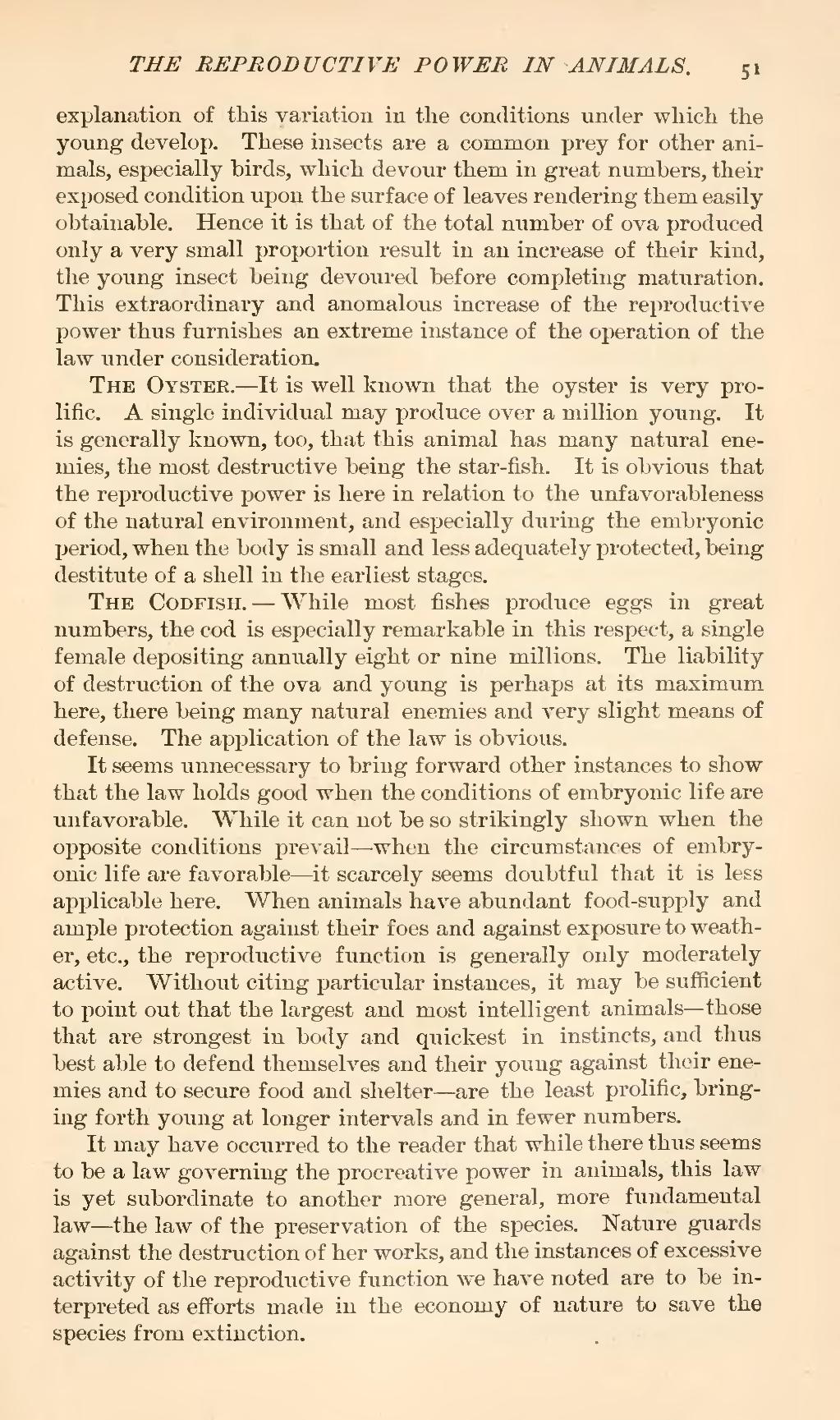explanation of this variation in the conditions under which the young develop. These insects are a common prey for other animals, especially birds, which devour them in great numbers, their exposed condition upon the surface of leaves rendering them easily obtainable. Hence it is that of the total number of ova produced only a very small proportion result in an increase of their kind, the young insect being devoured before completing maturation. This extraordinary and anomalous increase of the reproductive power thus furnishes an extreme instance of the operation of the law under consideration.
The Oyster.—It is well known that the oyster is very prolific. A single individual may produce over a million young. It is generally known, too, that this animal has many natural enemies, the most destructive being the star-fish. It is obvious that the reproductive power is here in relation to the unfavorableness of the natural environment, and especially during the embryonic period, when the body is small and less adequately protected, being destitute of a shell in the earliest stages.
The Codfish.—While most fishes produce eggs in great numbers, the cod is especially remarkable in this respect, a single female depositing annually eight or nine millions. The liability of destruction of the ova and young is perhaps at its maximum here, there being many natural enemies and very slight means of defense. The application of the law is obvious.
It seems unnecessary to bring forward other instances to show that the law holds good when the conditions of embryonic life are unfavorable. While it can not be so strikingly shown when the opposite conditions prevail—when the circumstances of embryonic life are favorable—it scarcely seems doubtful that it is less applicable here. When animals have abundant food-supply and ample protection against their foes and against exposure to weather, etc., the reproductive function is generally only moderately active. Without citing particular instances, it may be sufficient to point out that the largest and most intelligent animals—those that are strongest in body and quickest in instincts, and thus best able to defend themselves and their young against their enemies and to secure food and shelter—are the least prolific, bringing forth young at longer intervals and in fewer numbers.
It may have occurred to the reader that while there thus seems to be a law governing the procreative power in animals, this law is yet subordinate to another more general, more fundamental law—the law of the preservation of the species. Nature guards against the destruction of her works, and the instances of excessive activity of the reproductive function we have noted are to be interpreted as efforts made in the economy of nature to save the species from extinction.
